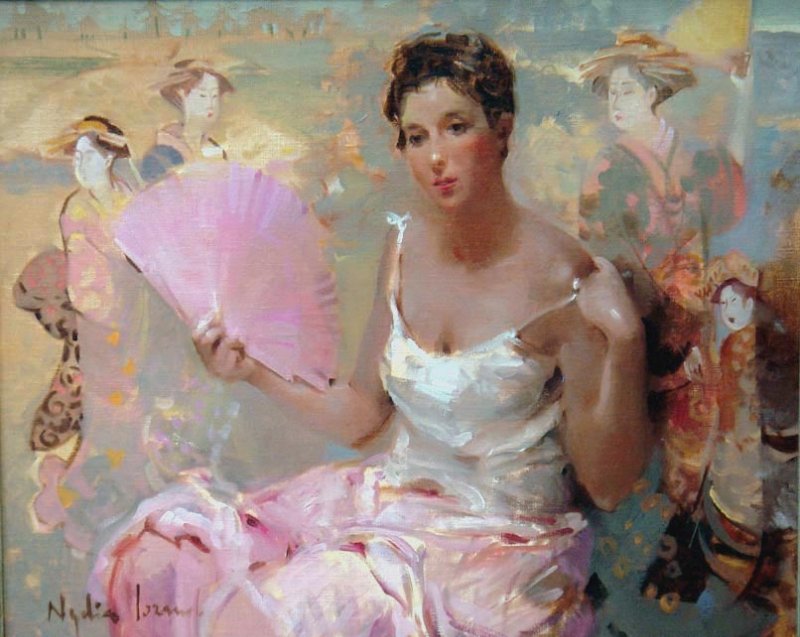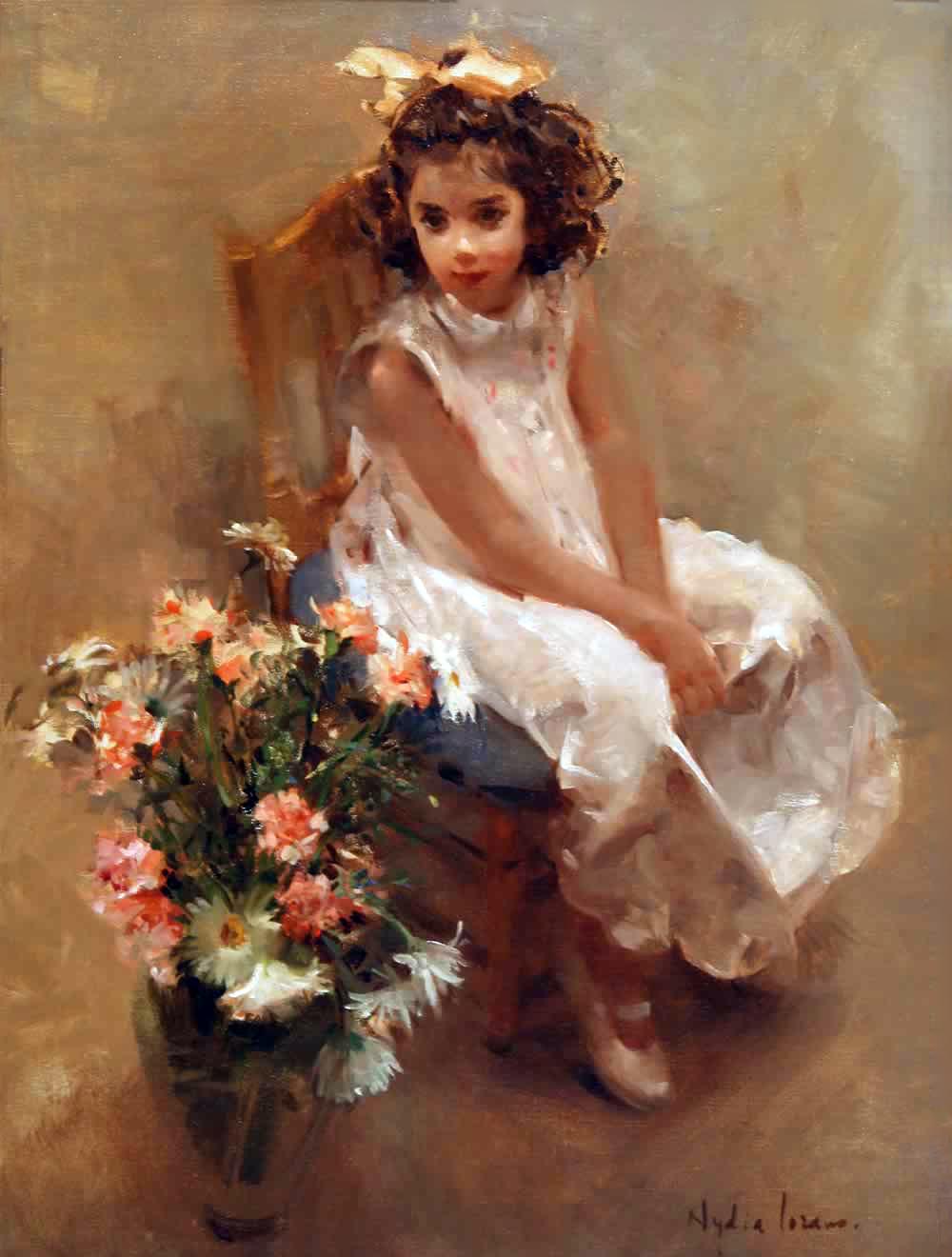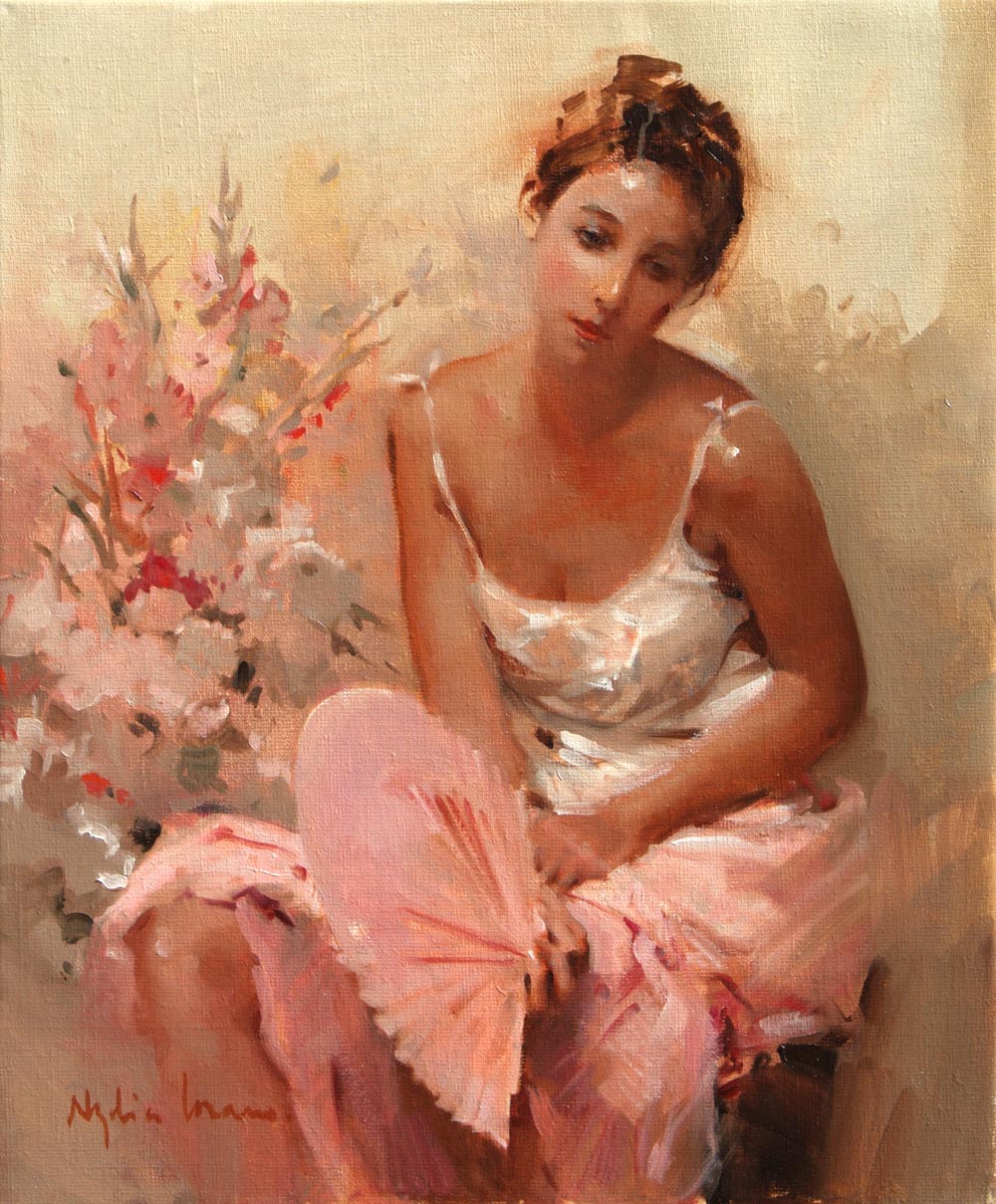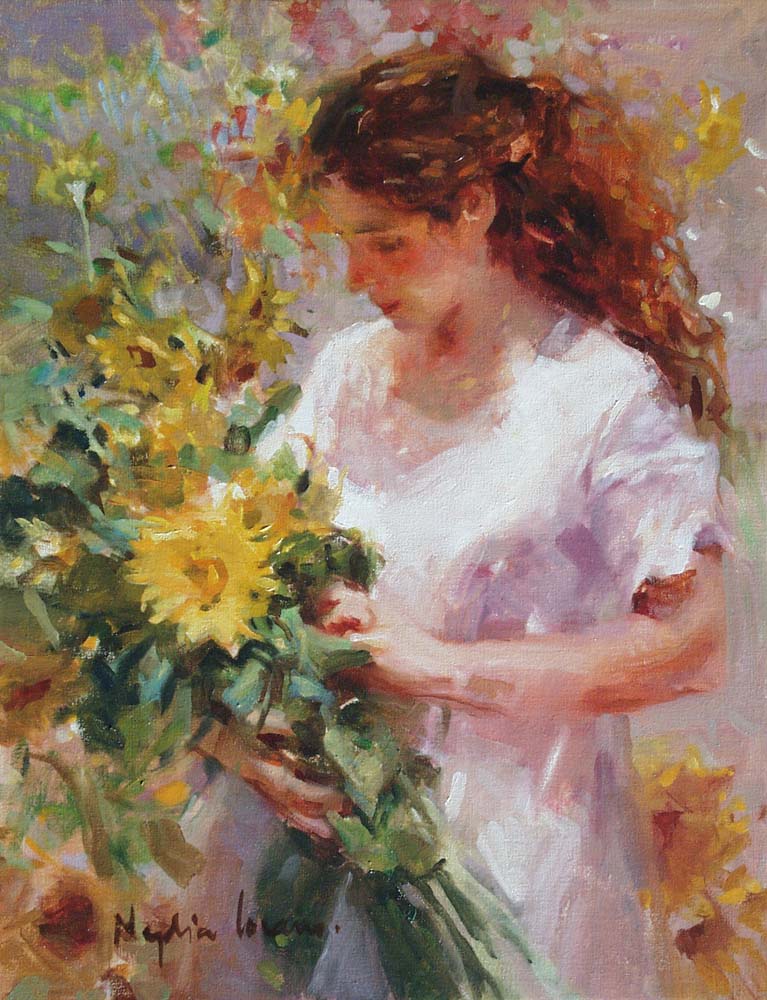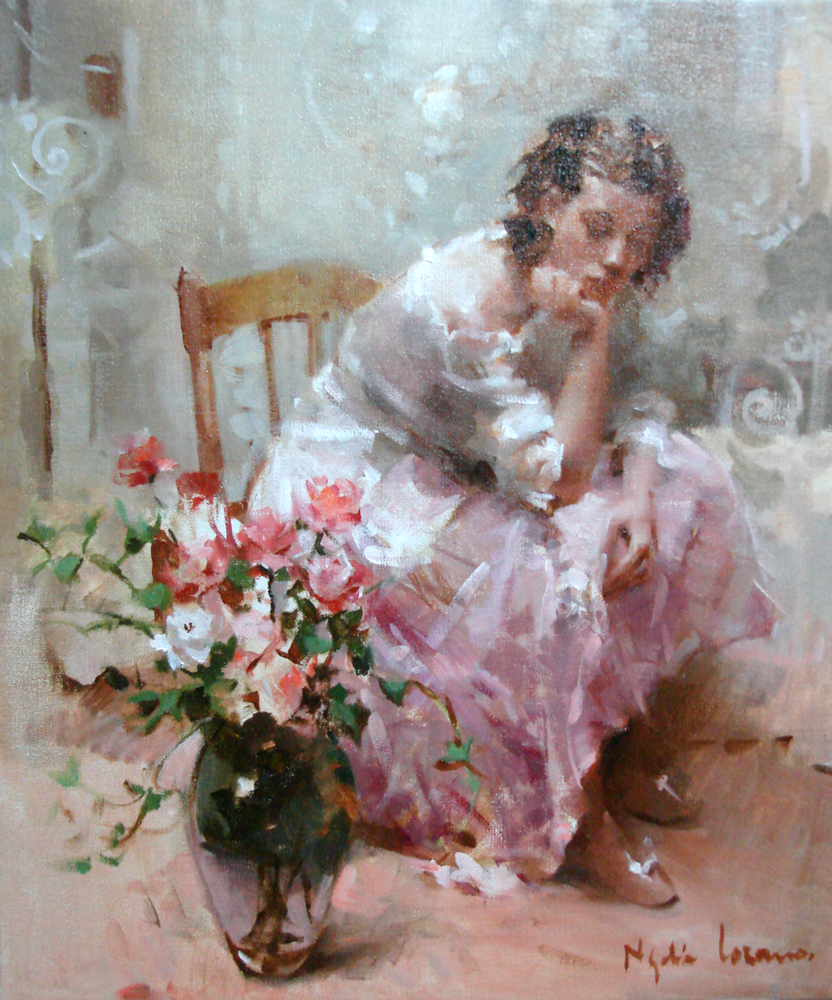Spanish painter Nydia Lozano was born in Alginet, a small town of the Ribera of Valencia. The name Nydia recalls the character created by Bulwer-Lytton in his The Last Days of Pompei when the local priest refused a baptism with a pagan name so that Nydia had to be baptized as Laura.
Nydia grew up in the huerta landscape, in which life translates itself in a strong luminous atmosphere and in the bright colors of rice fields and of orange and lemon trees. Everything that her sensitiveness kept accumulating in youth manifested itself in her affection for painting.
Nydia grew up in the huerta landscape, in which life translates itself in a strong luminous atmosphere and in the bright colors of rice fields and of orange and lemon trees. Everything that her sensitiveness kept accumulating in youth manifested itself in her affection for painting.
Nydia Lozano’s first works were landscapes depicting Alginet and the places that her family used to visit in the summertime, places like Torremanzanas in the Sierra de Alcoy; she also painted portraits of her friends and relatives. When her father noticed the intensity of her affection for painting he visited José Espert in order to know his opinion of her drawings. The Alginet master José Espert had inherited the vision of the great Valencian School, just as Romero Ressendi (who was a friend of his) had defined the evolution of Andalusian painting.
Espert was impressed with the drawings and invited José Lozano to bring his daughter to his atelier. Nydia spent many hours there watching the master paint and listening to his opinions about painting. She learned much more than a technique; she learned the way to look and to understand; she learned the concept of pictorial synthesis that the 19th century masters had achieved and that in the early 60s, after the deaths of Manuel Benedito and Salvador Tuset (to name two valencian masters, both Sorolla’s disciples) had fallen into oblivion and conscious neglect.
Actually, the movement to adopt in Spain the artistic trends developing in the United States and Europe had one of its main points of focus in Valencia with Estampa Popular and later the renowned Equipo Crónica. At that time, finding someone who quoted Sargent, Zorn, Laszló, Pinazo or Sorolla was almost impossible, but Espert had no need to prove to anyone his modernity and through him one came to understand the significance of this new historical movement in all of its various dimensions.
In 1965, Nydia Lozano entered the San Carlos Fine Arts School of Valencia, where she met her husband-to-be, the painter Leopoldo Sánchez. The School (now a Faculty of the Polytechnic University) was then located in the ancient Convent of El Carmen.
Among their professors were the two great figures of post-war Valencian painting: Genaro Lahuerta and Francisco Lozano, although José Ros or Calatayud, who loved their students as much as painting, figured as more influential teachers. During the years spent at the School, Nydia and Leopoldo came in contact with the avantgarde, then the commanding artistic presence: Equipo Crónica, José Iturralde, Eusebio Sempere, Fernando Zóbel, Gustavo Torner, etc.
Their first exhibition was a collective showing with Vicente Silvestre at the Ateneo Mercantil of Valencia in January, 1969. Around that time Nydia won several awards such as the Ciudad de Játiva in 1965, the Caja de Ahorros del Sureste Plastic Arts Biennal Medal in 1968 and, in the same year, the Education and Science Ministery Silver Medal which granted her a stipend in order to paint in Segovia. In 1970 she was awarded a grant in Rome by the Castellblanch Foundation.
After finishing their studies in 1971, Nydia Lozano and Leopoldo Sánchez got married, leaving Valencia for Barcelona in 1974.
From there they began an exhibiting carreer all over Spain: Madrid (Ingres and Zúccaro galleries, Mellado in San Lorenzo del Escorial and Patto’s in Becerril de la Sierra), Valencia (Benlliure, Puchol and Pizarro), Bilbao (Iris), Barcelona (Segura Viudas) and other Spanish capitals such as Zaragoza, Burgos, Logroño, Albacete or Málaga.
While living in Barcelona, Nydia and Leopoldo made numerous travels around Spain which often served as a thematic source for their pictures.
They felt especially attracted by the life and the landscapes of the Andalusian province of Cádiz, acquiring a house in the town of Vejer de la Frontera.
In the summer of 1991, they settled in Galifa, a small valley in Murcia’s southern coast.
From there they continued their work exhibiting in galleries in Spain and abroad: Ambassador Galleries in New York, Adamson-Duvannes Gallery in Los Angeles and Simic-New Renaissance in Carmel-by-the-Sea, California and Addison in Boca Raton, Florida, as well as in the galleries Espace Raub in Brest, Euroarte in Lisbon and Inter Arte in Porto.
In Spain they have been invited to participate in several art fairs such as Artexpo (Barcelona), Interarte (Valencia) and Artesantander (Santander).
In 1996, together with their friend Philippe Martin, they founded in Murcia La Galería de Arte Convard, filling thereby the need for a gallery devoted to Spanish realist art.
Lydia Lozano è nata nel 1947 in Alginet, una piccola località di Ribera in Valencia, Spagna. Le prime opere di Nydia erano paesaggi raffiguranti Alginet.
Quando suo padre si accorse del suo interesse per la pittura, si rivolse al maestro pittore algerino José Espert per avere da lui una valutazione del talento di sua figlia.
Espert ne fu colpito ed invitò José Lozano a portare la figlia nel suo atelier. Nydia trascorse molte ore a guardare la tele del maestro e ad ascoltare le sue opinioni sulla pittura.
Ha imparato molto più di una tecnica; ha imparato il modo di guardare e di capire; ha imparato il concetto della sintesi pittorica dai maestri del XIX secolo.
Nel 1965, Nydia Lozano entra nella Scuola di Belle Arti di Valencia, dove ha incontrato suo marito, il pittore Leopoldo Sánchez. Tra i loro professori c'erano due grandi figure della pittura valenzana del dopoguerra: Genaro Lahuerta e Francisco Lozano.
Durante questi anni, Nydia e Leopoldo entrano a contatto con l'avanguardia artistica: Equipo Crónica, José Iturralde, Eusebio Sempere, Fernando Zobel, Gustavo Torner, etc.



.jpg)
.jpg)
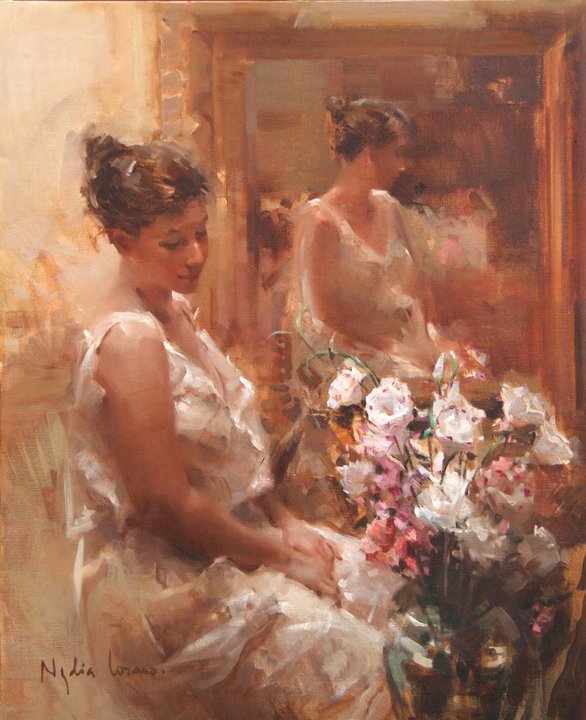





.jpg)
.jpg)





.jpg)

